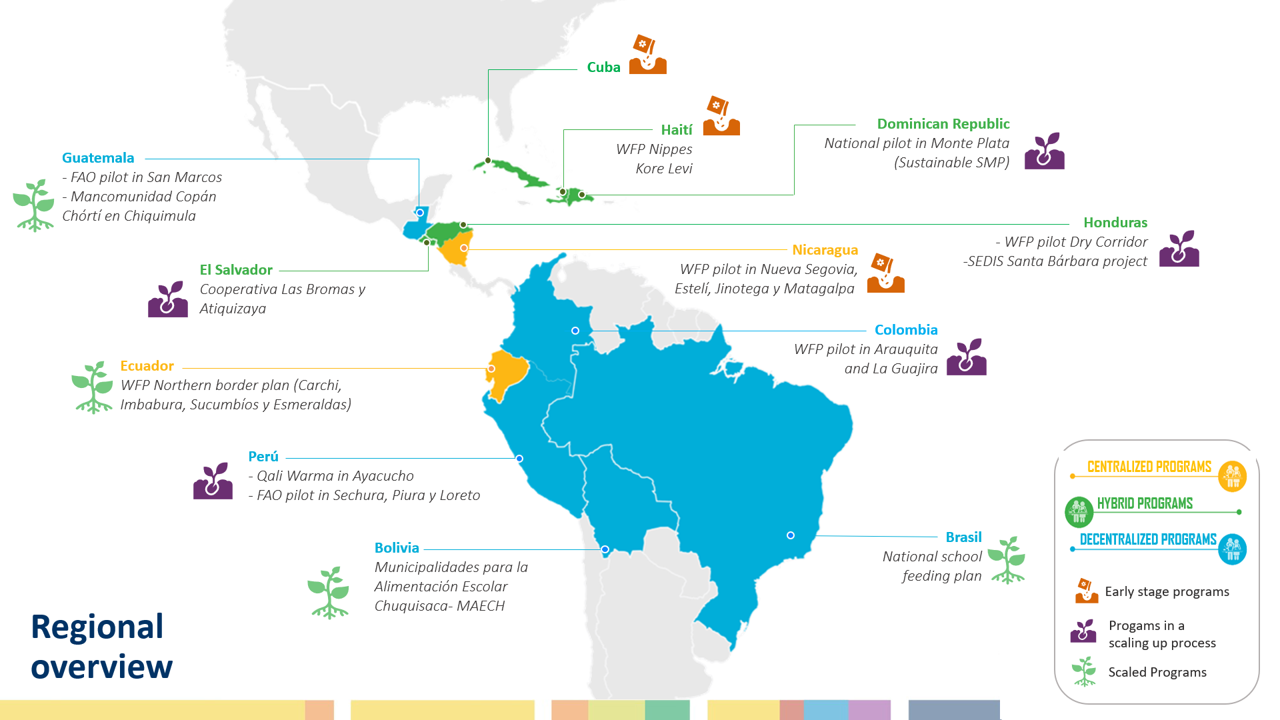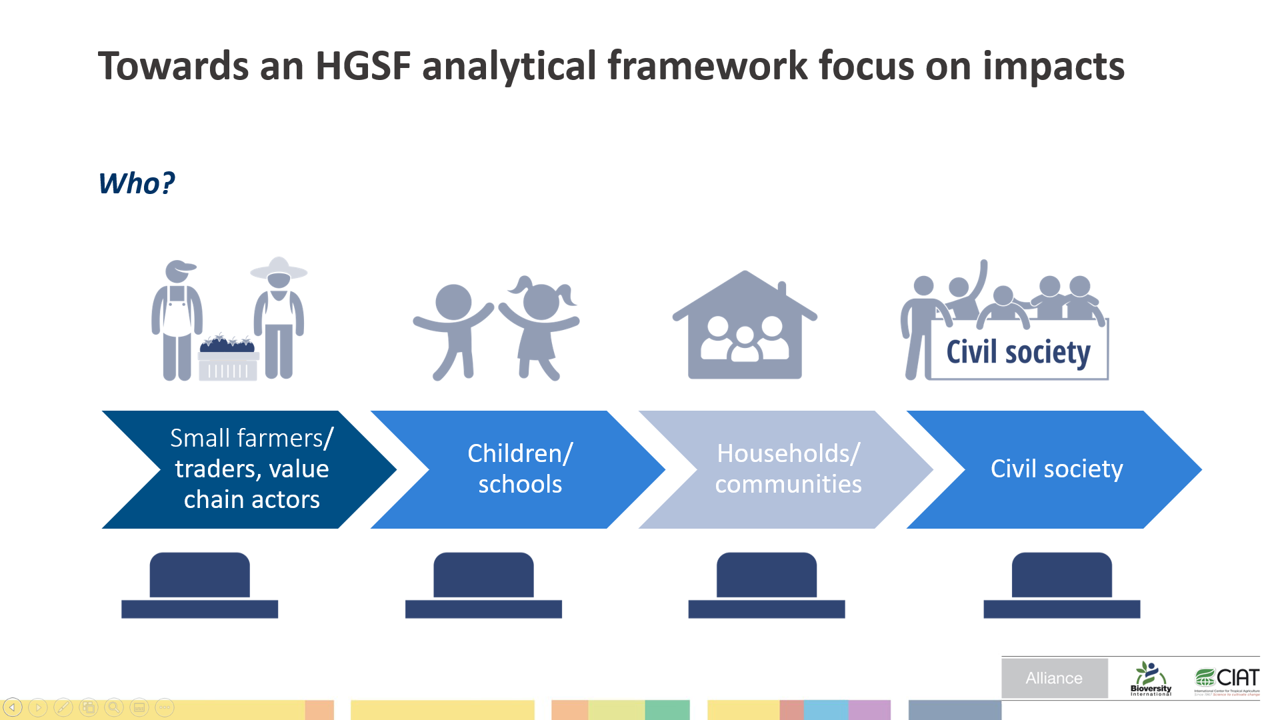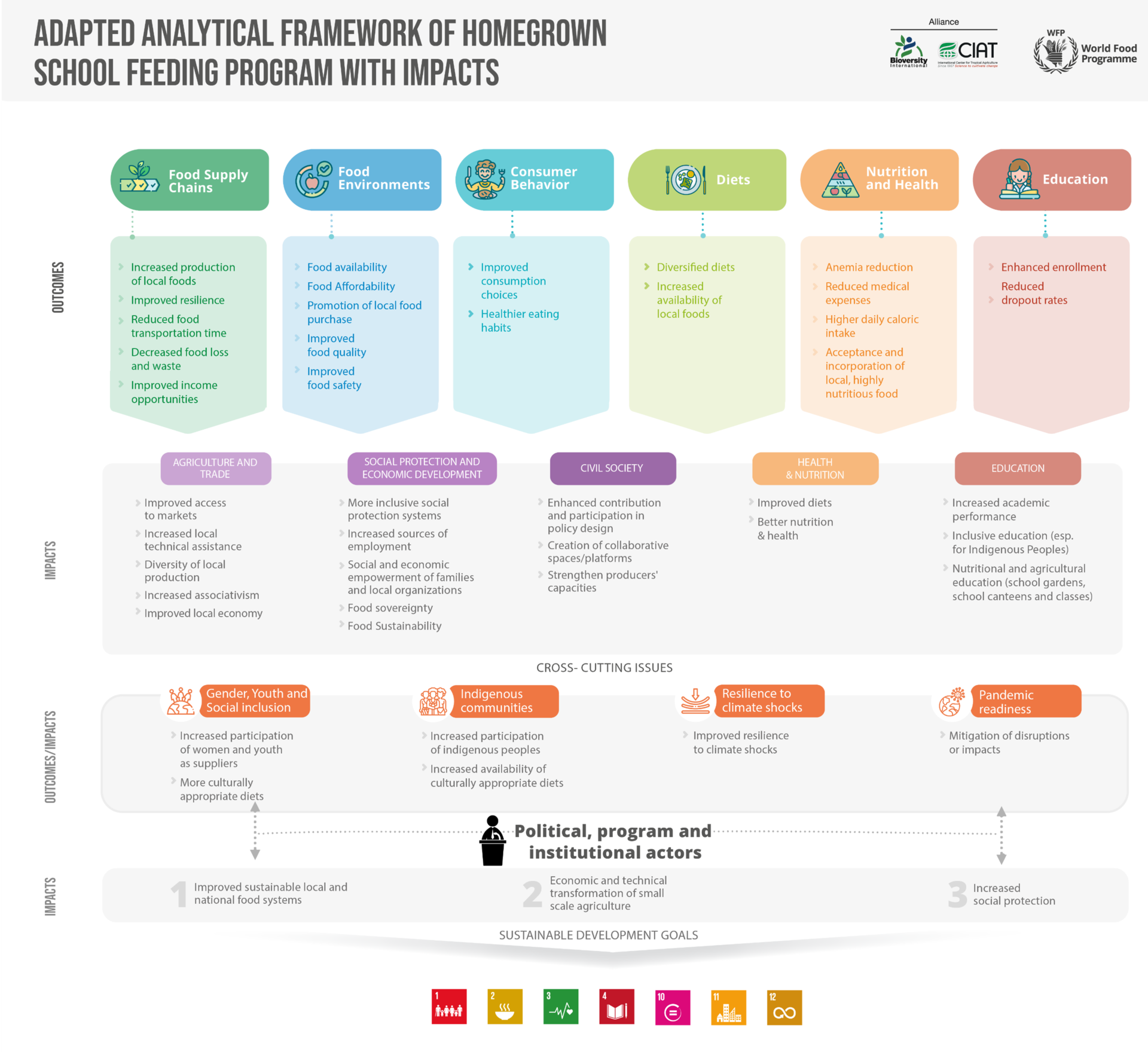Blog The School Meal Coalition We Need

School feeding is the largest and most widespread social safety net in the world, benefitting 388 million children globally. However, a need for more evidence to back up claims can be expected as more development partners become engaged, and financing mechanisms are put into place.
The Alliance of Bioversity International and CIAT, CGIAR, recently led a session during the first School Meals Coalition (SMC) week to discuss how we can address this need.
Both globally and within Latin America and the Caribbean (LAC), home grown school feeding (HGSF) has shown potential to simultaneously increase market opportunities and income for smallholder farmers while achieving nutrition-sensitive objectives and complementary interventions for communities, especially women and children. Yet, rigorous evidence for the impact of HGSF is still limited and good practices, lessons learned and valuable experiences from successes and failures have not been adequately assessed and analyzed. This presents an ongoing challenge for decision-making, policies and future design and implementation of HGSF and getting the model to scale. Thus, in an effort to share evidence for the impact of HGSF and discuss how to tackle its challenges, the Alliance organized and led a session titled “Ensuring school meals are more responsive to local markets, agrobiodiversity and climate”.
Presenting evidence of the impact of different HGSF models implemented in 12 LAC countries (Bolivia, Brazil, Colombia, Cuba, Dominican Republic, Ecuador, El Salvador, Guatemala, Haití, Honduras, Nicaragua and Perú) was Sara Rankin, Research Associate, ABC.

Figure 1: Regional overview of HGSF programmes.
While evidence is limited, similar barriers and limitations appear across the region, including complex public procurement laws to be met by small producers and difficult price competitiveness with large producers/imports. However, working towards overcoming these are well worth it- HGSF programmes are an opportunity to impact a community that goes beyond the children at school. For example, Nicaragua WFP purchases grains produced by local organizations in Nueva Segovia, Estelí, Jinotega and Matagalpa, supporting 1,454 women and 2,608 men members.
A newly-conceived qualitative evaluation tool that was developed as part of the above assessment to measure the impact of HGSF, was then presented by Alliance scientist Osana Bonilla-Findji. She highlighted that key to the framework’s design was the required focus on the large range of actors that can potentially benefit from the implementation of HGSF programs: which include not only the children and schools, but also the key players that are “behind” (at the basis and along the local value chain) and beyond the school doors (as households, communities and the whole civil society).

Figure 2: HGSF programmes are an opportunity to impact a community that goes beyond the children at school.
A beta version of this framework was completed based on the evidence gathered in the review of the 12 LAC countries, which allowed the mapping of specific outcomes and impacts under each component. However, this analytical framework is to be considered only a first step in assessing the impact of HGSF initiatives. To be fit for purpose- that is, support policy level engagement & foster intersectoral, as well as interinstitutional coordination-it will require additional work and inputs from LAC countries, and for that it will need an agreed timeline and a process for expert engagements, workshops, feedback collections, refinement, validation and piloting.

Figure 3: Evidence of impacts and benefits for beneficiaries in the 12 LAC countries, using the adapted analytical framework to organize them, across five main food system building blocks and impact areas.
Building on the presentations, the second half of the session hosted a high-level panel discussion, guided by moderator Teresa Borelli, Associate Scientist at the Alliance. Speakers commented on the ongoing challenges for decision-making, policies and future design and implementation of HGSF and getting the model to scale.
"A challenge faced during the study in LAC, but not uncommon globally, is that when data is collected, it is collected around specific project interventions,"
noted Mark Lundy, Research Director, Food Environment and Consumer Behavior. He urged participants to think about how to transition the data of these specific and perhaps limited number of indicators to national data collection systems that already exist. Furthermore, he stressed the importance of packaging data in a comprehensible way to convince those who are going to make decisions and invest in scaling efforts, about the value of this system.
“While data is king and we need more analysis and evidence generation, we have to be cognizant of the reality that many low-income countries are in real dire straits as far as public finances go,” highlighted Mehrdad Ehsani, the Rockefeller Foundation’s Managing Director for the Food Initiative in Africa. However, he also believes that institutional markets have a leadership role to play and can give a very powerful signal to the supply chains to shift towards the outcomes that we all seek-towards more inclusive, sustainable and resilient food systems.
Wrapping up the discussion, Prof. Donald Bundy, from the London School of Hygiene & Tropical Medicine and Director of the Global Research Consortium for School Health and Nutrition, shared how we might improve shared learning across sectors at the national scale or across countries at a regional or global scale. He emphasized that, "We must be deliberate in our efforts to collaborate at and across all levels and sectors- going beyond the silos that we usually work in," He also reiterated the importance of setting up communities of practice (such as that of the Global Research Consortium for School Health and Nutrition) to not only host multilevel and multisectoral conversations, but to also build concise evidence that’s ready for uptake.
Mark Lundy closed the session, reminding participants that the programme of school feeding sits in a broader food system. He recognized that while governments have power in terms of procurement and rule setting, we must also think about how we can provide incentives and support to other actors, simultaneously looking at evidence to improve their performance not only for short term goals of nutrition and education-but long-term behavioural change.
The School Meals Coalition (SMC) is an initiative led by a group of member states and partners to ensure that every child has the opportunity to receive a healthy, nutritious meal in school by 2030.
Do you want to help drive actions that can re-establish, improve and scale up food and education systems? Contact [email protected]
